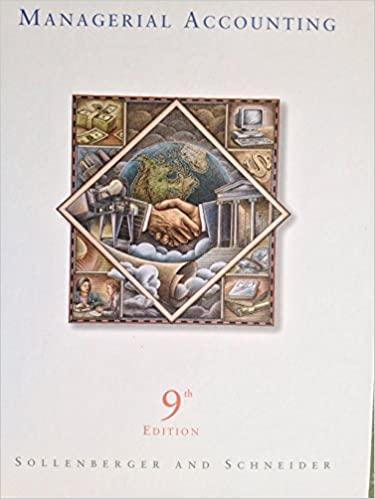. Lose a little on each one, and make it up on volume. Adams Company currently sells...
Question:
. "Lose a little on each one, and make it up on volume." Adams Company currently sells three products whose quantities, selling prices, and variable costs are:

Part A: The sales manager argues that Product 111 should be dropped, stating that it is difficult to make profits on volume when every unit loses money.
\section*{Required:}
1. Under what conditions should Product 111 be dropped? Should not be dropped?
2. If Product 111 is dropped, comment on profits per unit of Product 110.
3. If Product 111 is dropped, how many more units of Product 112 need to be sold to maintain current profit levels?
Part B: The sales manager finds another product, 113, to replace Product 111. No additional sales of Product 110 or Product 112 will occur. Product 113 can be sold for \(\$ 8\) and has a variable cost of \(\$ 6\). But, it uses only half of the production time per unit that Product 111 uses. Sufficient sales can be generated to use all of Product 111's current capacity.
The sales manager argues that Product 113 should be added and Product 111 should be dropped by saying, "It is true that the contribution margin of Product 113 is only \(\$ 2.00\) per unit; but since more units of Product 113 can be produced, the fixed cost per unit will go down. Look, the fixed cost per unit on all units will drop by \(\$ 1.62\)-from \(\$ 7\) to \(\$ 5.38(\$ 350,000 \div 65,000)\)-if we switch to Product 113 . It'll increase profits on Products 110 and 112, too."
\section*{Required:}
1. Is the sales manager right? Explain.
2. What price must Adams charge for Product 113 for profits to equal current profits with Product 111?
Step by Step Answer:

Managerial Accounting
ISBN: 9780538842822
9th Edition
Authors: Harold M. Sollenberger, Arnold Schneider, Lane K. Anderson





